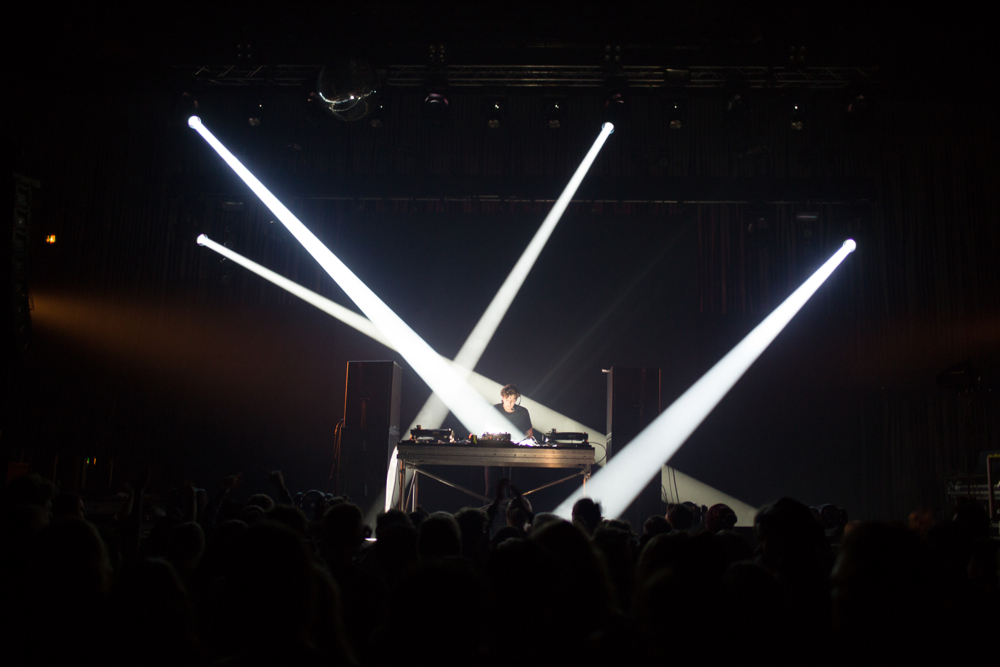Winter Melodies: Eight Takeaways from Sónar Reykjavik
We highlight the standout performances from the Icelandic edition of the international Sónar music festival.
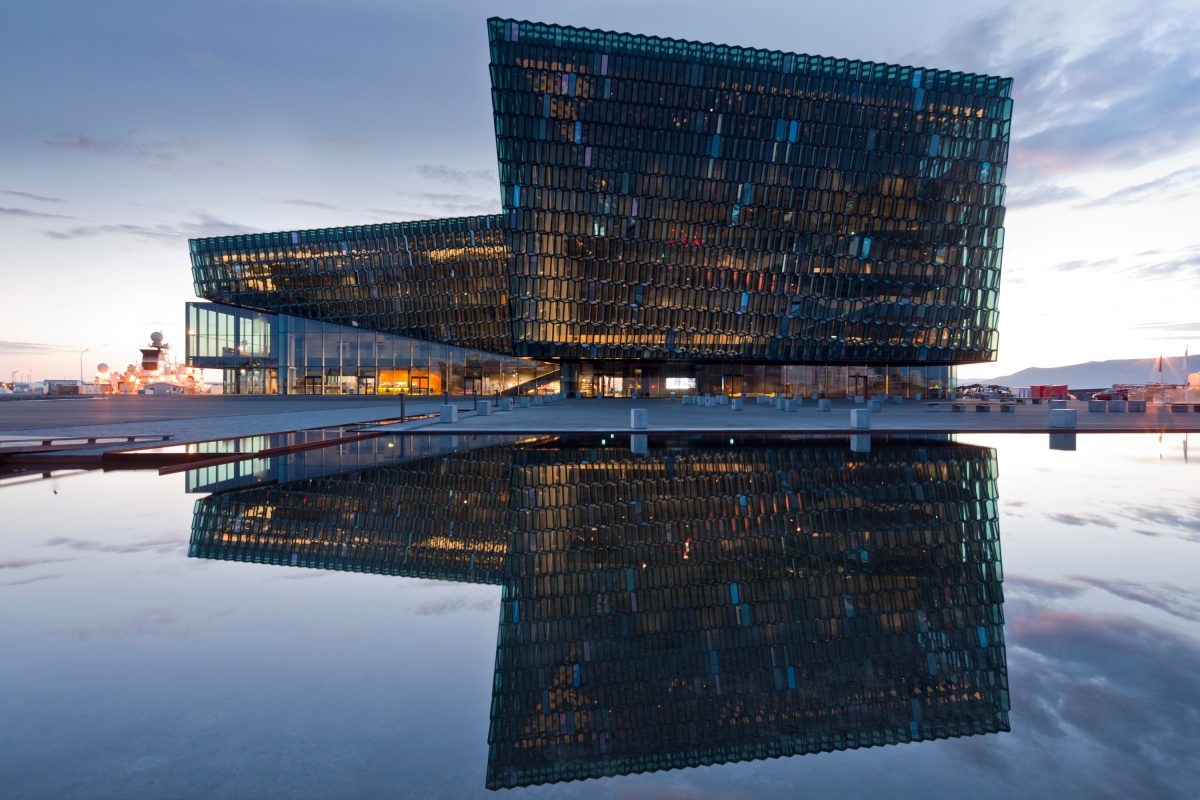
Winter Melodies: Eight Takeaways from Sónar Reykjavik
We highlight the standout performances from the Icelandic edition of the international Sónar music festival.
Last month, XLR8R made the journey to Reykjavik, Iceland—the world’s most northerly capital city, no less—to take in the sounds, sights and smells of Sónar Reykjavik. These days there are a host of Sónar festivals away from the event’s original Barcelona home, and this was one of three Nordic editions in the space of a few weeks, with Sónar Stockholm taking place over the same weekend, and Sónar Copenhagen scheduled for mid-March. We learned plenty about the country, the city, and the festival over the four days we spent in Reykjavik, and so here we gather together eight lasting impressions of the third annual edition of Sónar Reykjavik.
Reykjavik is tiny, charming, and incredibly welcoming.
Reykjavik is one of those cities you just get a good feeling for the moment you arrive. With the country’s total population being just 300,000, and Reykjavik accounting for just over a third of that, it’s scant surprise that the city feels and is extremely compact. However the artistic, cultural mood and friendliness of the place is as advertised, plus a lot more. Within an hour of arriving in the central area of the city we were enjoying a wonderful nine-course tasting menu that featured a double-figure number of different types of fish and seafood, our first-ever taste of horse, and three separate tiers of dessert, all in the company of our friendly and engaging local hosts. That set the tone for a uniformly hospitable and enjoyable few days during which everyone we encountered bent over backwards to make our stay as pleasant and rewarding as possible.
Far-northern nations’ usual pragmatic good humor about bad weather prevails in Reykjavik too—the local saying we heard most frequently was “if you don’t like the weather in Iceland, just wait five minutes.” In our time there we found conditions to be changeable day to day rather than hour-to-hour, but they did pretty much run the gamut, with beautifully clear conditions and consequent low temperatures greeting us when we arrived, a bout of lashing rain hitting us in the middle and then a far more palatable day of gentle snow arriving to lift the mood again at the end. Bring your biggest jacket, in other words, but be aware that there’s a multitude of compensations for any weather-related hardships you might have to endure.

Harpa Concert Hall is a stunning and well-run venue.
They do seem to love an imposing glass edifice in the Nordic countries—the last Nordic festival this correspondent covered, Volt in Uppsala, Sweden, also took place in one—but the recently completed, instantly iconic Harpa Concert Hall that hosts Sónar was a cut above any similar building that I’ve seen. The building was half-finished when the Icelandic economy crashed in 2008, but the city decided to press on with construction, and its defiant majesty has since become a symbol of the country’s strength and powers of recovery, as well as a major economic boon in itself. Inside, there were plentiful bars and bathrooms, and the five main rooms used by the festival were easily accessed via escalators and were situated in very close proximity to each other. Best of all though, the building is a stone’s throw from Reykjavik’s most famous food spot, the Bill Clinton-endorsed Baejarins Beztu Pylsur hot dog stand, which provided a cheap, warming and delicious staging point on the walk from Harpa to our apartment on more occasions than we our or cholesterol levels care to remember.
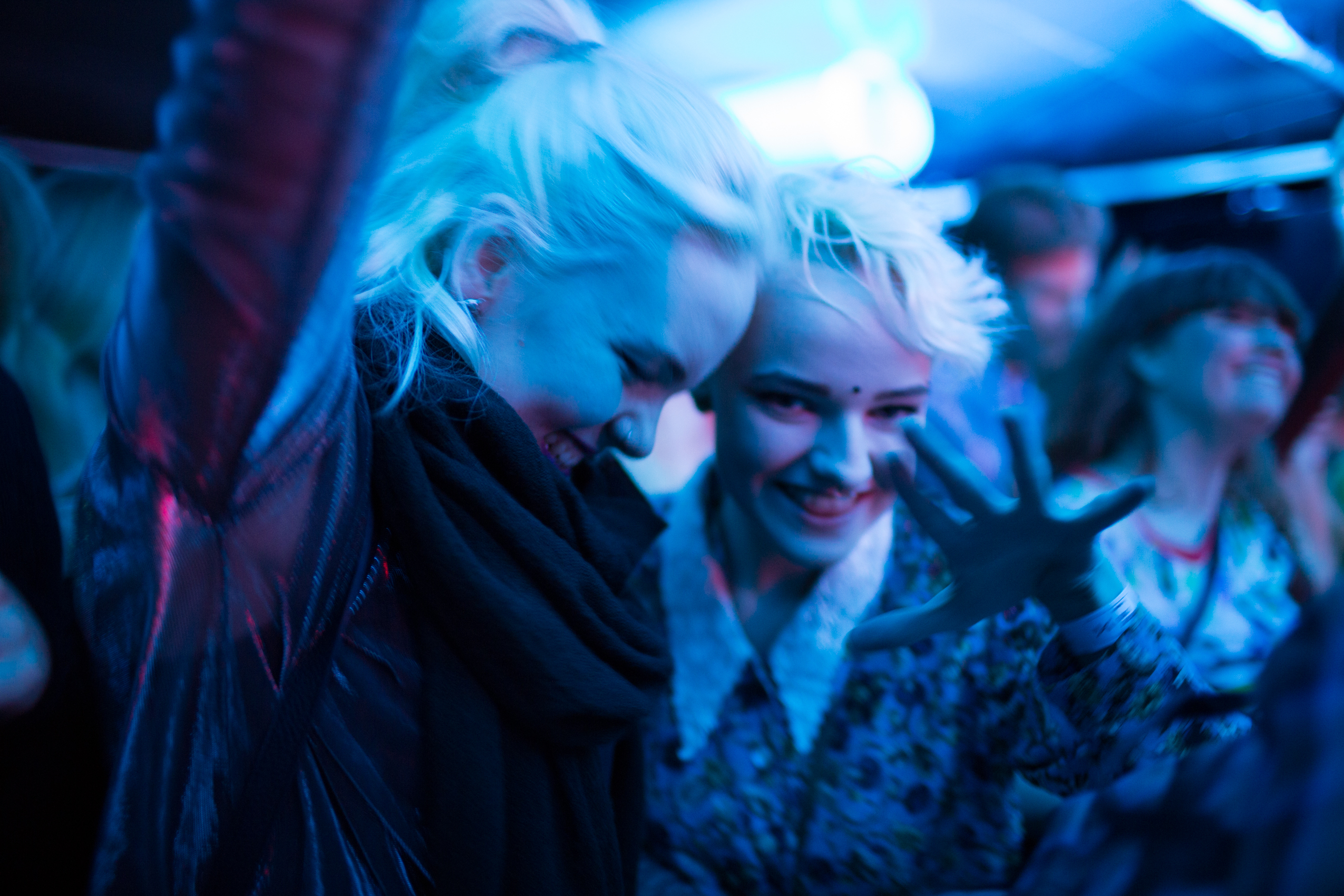
Todd Terje is an extremely safe pair of hands when it comes to starting the party.
Drinking is apparently a pretty rare pastime in Reykjavik outside of Fridays and Saturday nights, and, true to the character of the city, Thursday was a relatively easy-going introduction to the festival, with a bill largely comprised of local acts and a slightly earlier closing time. The big draw was Todd Terje‘s headline set, which just about everyone at the festival seemed to be watching in the packed SónarClub space. The crowd’s chants were inevitably for “Inspector Norse”, but moments such as “Delorean Dynamite”, with its video featuring the titular car playing in the background, and his closing track, which found Terje adorning Whitney Houston’s “I Wanna Dance With Somebody” with live synths, were more exciting. Whatever your favourite parts of his set, Terje’s presence undeniably cranked the festival up a notch, and provided ample reason to be excited about what was to come.
“Anyone who finds the usual festival experience too claustrophobic and intense a combination of music and debauchery should find that Sónar Reykjavik suits them down to the ground.”
Sónar Reykjavik has the best decompression options of any festival anywhere.
It’s reasonable to say that it would be madness to come to Sónar Reykjavik solely for the festival. With mind-blowing scenery and geological phenomena within touching distance of the capital, and a relatively gentle schedule of music to take in, there’s really no excuse for not making the effort to get out and see what else Iceland has to offer. Thursday night’s slow introduction to the festival meant we probably didn’t strictly need the rejuvenating effects of the Blue Lagoon geothermal spa on Friday’s crisp, sunny morning, but we went and enjoyed them anyway, and found that a Zen-like glow remained around us for days afterwards. We were less lucky with the weather when we took the Golden Circle Tour of the national park Þingvellir, the Gullfoss waterfall and the geothermal valley of Haukadalur, but the sights we saw will stay with us forever regardless. Anyone who finds the usual festival experience too claustrophobic and intense a combination of music and debauchery should find that Sónar Reykjavik suits them down to the ground.
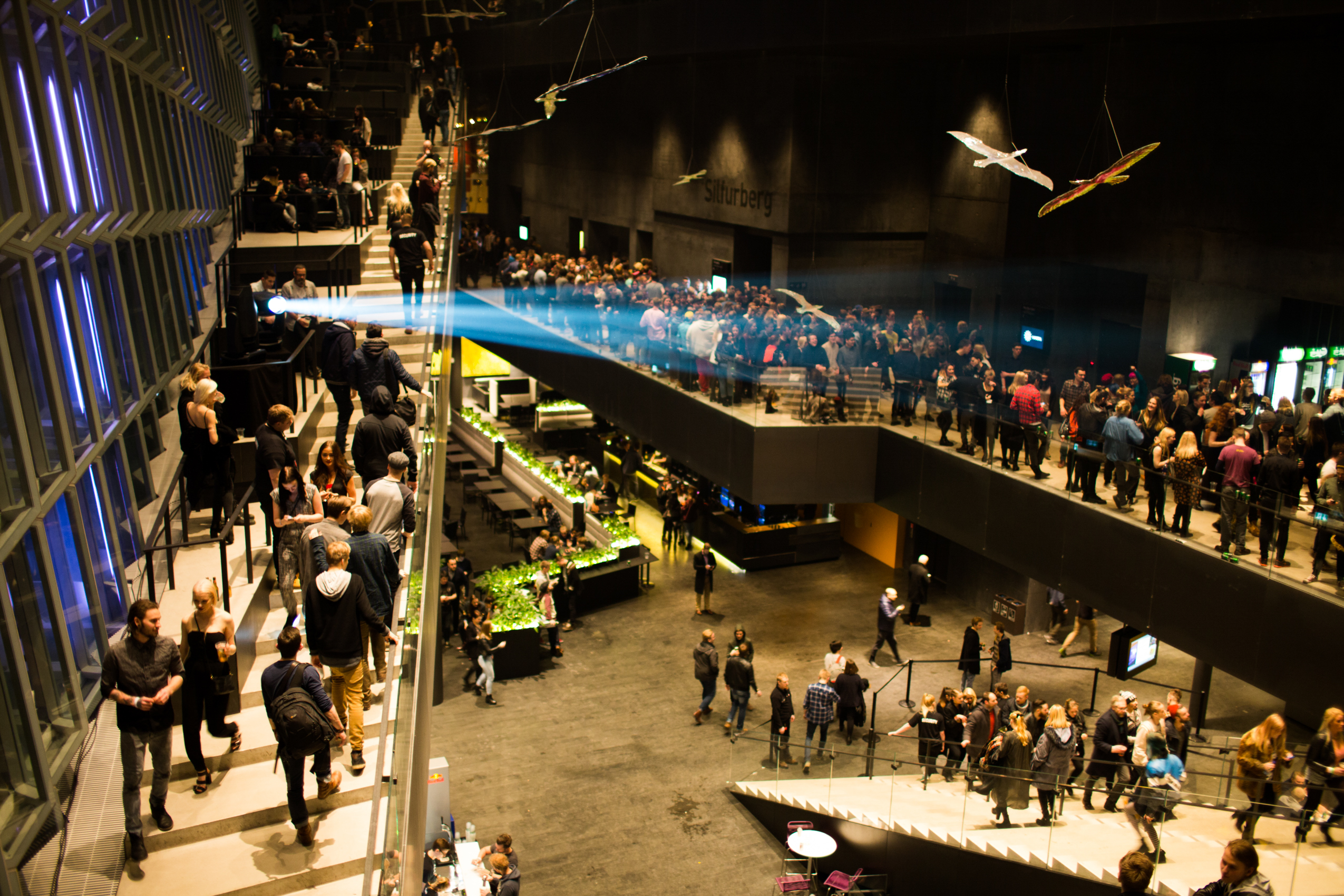
Sónar Reykjavik rewards wandering around.
Sónar Reykjavik had many great acts playing, and lots of lesser known but interesting-looking local bands and producers, but its bill wasn’t quite as crammed with names we were desperate to see every last second of as a lot of other festivals have been. This seemed like more and more of a blessing as time went on, however, as it enabled us to flit between areas and artists in a fluid way, quickly ditching whatever didn’t pass muster and sticking with stuff that caught our attention. It also meant we were able to see at least some of a good number of the local acts that peppered the festival’s early-evening schedules. Quality among these was unsurprisingly variable—Young Karin‘s Purity Ring-isms did very little for us, for example—but when we hit on something, as we did with the abstract hip-hop of the fabulously named Lord Pusswhip & Vrong, it was a real delight.
Another benefit of the festival’s unstressful schedule was that it gave us time to discover whole areas of Harpa, such as the out-of-the-way SónarComplex, which hosted largely experimental, local producers in a cinema-like environment, that at a more hectically scheduled event we may simply have never happened upon. Our SónarComplex highlight was the duo Royal, who combined electronics with live drums and guitar and duet vocals to very pleasing effect, but every time we ventured in there for a five or ten-minute time-out, something interesting was going on.
The car park was very often the place to be.
A strange statement on the face of it, but one founded in fact. Despite being fearsomely cold until the mild and wet final night, SónarLab, which was situated in Harpa’s underground car park, often felt like the most vital and exciting area of the festival. Local producer Bjarki‘s pumping, dramatic techno was our first introduction to the area, and subsequent DJs we saw down there, most notably Nina Kraviz and Mute founder Daniel Miller, maintained an atmosphere of slight malevolence that made for a really pleasing contrast with much of the rest of the event. A criticism we sometimes heard from people at Sónar Reykjavik was that it all felt a bit too clean and airy: SónarLab offered the perfect solution.

Kindness and SOPHIE were great fun in very different ways.
Never having seen the Numbers affiliate live before, SOPHIE’s show on Friday in SónarHall was one of the things I was most looking forward to about Sónar Reykjavik, and to my ears it didn’t disappoint. A teasing opening section of stop-start samples and bass led into a hyperactive hour of juddering low-end, aquatic rave and hard-house synths and helium vocals that garnered roughly equal quantities of puzzled looks and hands-in-the-air euphoria in the crowd. By its very nature, SOPHIE’s music, with its short-lived bubblegum grooves and challenging, sudden transitions, can be maddening, but he’s also a truly interesting artist to observe, and his set was a highlight of the weekend.
“When a band walks on at a festival with two backing singers in sparkly costumes, you kind of know you’re about to have some fun.”
At the other end of the experimental spectrum was Adam Bainbridge’s Kindness. When a band walks on at a festival with two backing singers in sparkly costumes, you kind of know you’re about to have some fun, and they provided exactly that. Kindness’s soul and R&B-soaked funk is a recipe for good times on its own, but combined with copious onstage energy, mid-song detours into the likes of “Purple Rain” and Womack & Womack’s “Teardrops”, and a flamboyant cover of The Replacement’s “Swingin’ Party”, it made for the best combination of good music and showmanship that we saw all festival.
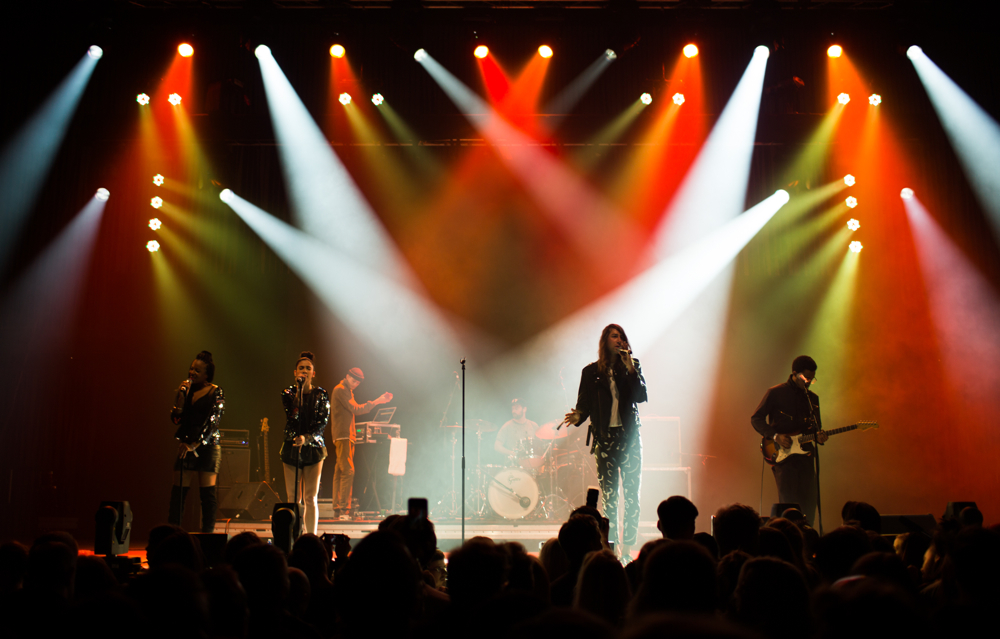
Jamie xx was the perfect way to end.
Sónar Reykjavik, with its 2am finishes and second mortgage-necessitating bar prices, wasn’t the kind of mental and physical endurance test XLR8R has endured at countless other festivals. By Saturday night, though, the combined rigours of travel, the festival and trying to experience as much of the country as possible in between still had us feeling a little tender. As the final sets of the weekend kicked off, then, we found we had a short-lived tolerance for Skrillex‘s diabetes-inducing cacophony in SónarClub, while Randomer‘s brutal, Berghain-ready techno in SónarLab was similarly inhospitable. Step forth Jamie xx, then, who welcomed us with Kowton’s wonderful “Glock and Roll” and proceeded to put together an airy closing set of disco, gentle bass music excursions and a liberal smattering of his own cuts that sent us off to towards the hot dog stand with big smiles on our faces.
